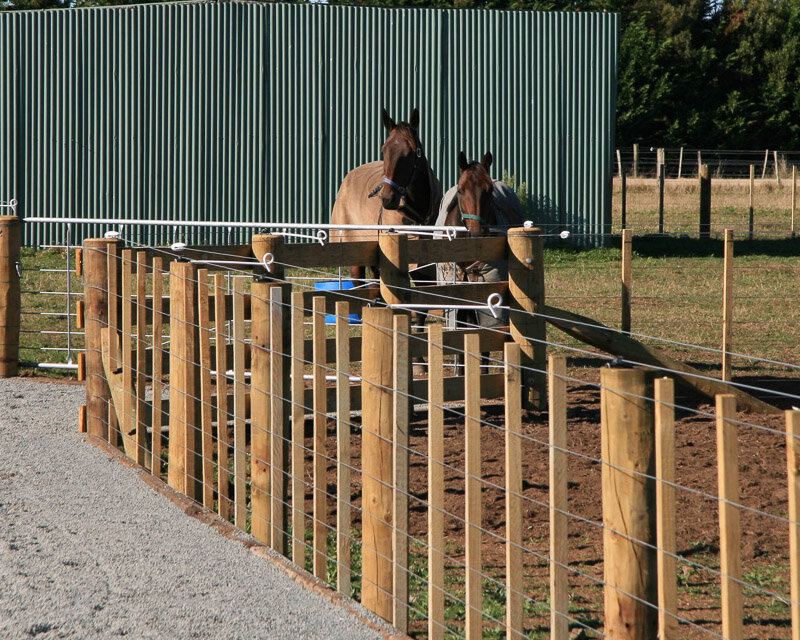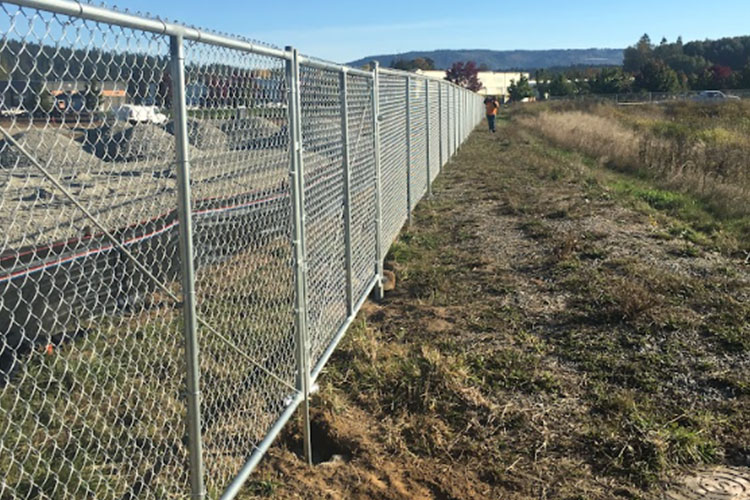A Comprehensive Guide to Fence Install: What You Required to Understand About Secure Fencing Provider
When it pertains to setting up a fence, you've obtained a great deal to consider. From selecting the appropriate materials to comprehending regional guidelines, each step can really feel overwhelming. You'll need to analyze your residential or commercial property and choose if you intend to take on the installment on your own or work with an expert. That's just the start. Let's discover the important factors that can make or break your secure fencing project.
Understanding Various Sorts Of Secure Fencing Products
When you're choosing a fence, recognizing the various sorts of fence products is important. Each product provides one-of-a-kind advantages and drawbacks, impacting your choice. Timber supplies a timeless look and can be personalized, however it requires regular upkeep and may rot gradually. Plastic is low-maintenance and sturdy, standing up to fading and insects, but it can be costlier upfront. Chain-link fence is cost-effective and sensible for confining big areas, though it lacks privacy and aesthetic allure. Steel fencing, like functioned iron or light weight aluminum, provides toughness and sophistication yet might require rust defense. Compound materials blend the finest of wood and plastic, using resilience with a natural look. Consider your budget, desired visual appeals, and maintenance choices when evaluating these choices. Eventually, selecting the best material will aid you create a fence that fulfills your needs and boosts your property's value.
Examining Your Residential Or Commercial Property and Secure Fencing Needs
Before you begin your fencing installation, it's necessary to analyze your home borders and the function of your fencing. Recognizing regional laws and authorizations will likewise assist you avoid any kind of lawful concerns down the line. By thinking about these variables, you'll assure your fence meets both your demands and community criteria.
Residential Property Borders and Lines
Comprehending your property borders is important for a successful fence setup, as it not just helps you establish where your fence will certainly go but additionally guarantees you're appreciating your next-door neighbors' area. Beginning by examining your residential or commercial property deed or survey, which typically describes the exact borders. You may additionally intend to speak with a specialist land surveyor if you're uncertain.
As soon as you've developed your boundaries, note them clearly with risks or flags. This visual help will certainly lead you during the installation and prevent any conflicts with next-door neighbors. Bear in mind, local zoning laws might determine fence placement and height, so inspect those policies also. Taking these steps assurances your fencing is effectively positioned and compliant, making the entire procedure smoother for you.
Purpose of Fence
Third, secure fencing can define your home limits, making it clear where your room ends and your next-door neighbor's starts. A well-placed fencing can help take care of sound from close-by roadways or next-door neighbors and even maintain animals and kids safe. By reviewing your particular needs, you can select the appropriate kind of secure fencing to achieve these benefits effectively.

Local Rules and Permits
Just how can you assure your fencing installment abides with neighborhood laws? Some areas require permits for any type of brand-new fencing, while others may just need them for taller frameworks.
Additionally, consider property lines and any kind of easements on your land. Marking your limits can protect against disputes with neighbors or prospective lawful issues. By recognizing these laws ahead of time, you can prevent pricey blunders and identify your fencing is built to last, improving both your building's worth and your assurance.
Local Regulations and Permits for Secure Fencing
Prior to you begin your fence project, it is very important to check local laws and obtain any type of necessary permits. Each city or area has its own rules relating to fence height, products, and positioning. These regulations assure that your fencing abides by security standards and community visual appeals.
Start by visiting your local zoning office or their web site to find certain requirements. Fence Builders. You may need to submit a fence strategy, outlining measurements and products. Some locations might even require a study to confirm building limits. Do not neglect to take into consideration any kind of homeowners' association (HOA) guidelines, as they can impose extra limitations.
Neglecting to comply with these policies can bring about penalties or compelled elimination of your fencing, losing both time and money. So, put in the time to research study and protect the proper licenses for a smooth setup procedure. This step is vital in making certain your project aligns with neighborhood regulations and neighborhood standards.
Picking In Between DIY Installment and Specialist Solutions
Are you thinking about whether to tackle the fencing setup yourself or employ a professional? This choice rests on numerous aspects. Assess your skill level. If you come in handy and have experience with comparable tasks, DIY could save you money. However, be view it now sincere regarding your abilities; mistakes can bring about additional costs and migraines.
Installing a fencing takes time, and if you're juggling a hectic timetable, working with an expert can assure it gets done successfully. If your lawn has difficult surface or particular layout demands, specialists bring competence that can make a distinction.
Lastly, aspect in neighborhood laws. A professional understands the authorizations and codes needed, assisting you stay clear of prospective fines. Ultimately, evaluate your skills, time, complexity, and laws to make the very best option for your fence job.
Step-by-Step Guide to Fence Setup
Once you've made a decision to move on with your fence installment, following a structured step-by-step method will ensure a smooth process. Begin by marking the fence line with stakes and string to picture the layout. Next off, inspect local guidelines to confirm conformity with height and home lines.
Dig blog post openings at the very least 2 feet deep, spaced according to your fence kind-- typically 6 to 8 feet apart. Insert the articles right into the openings and fill them with concrete for stability. When the articles are set, connect the straight rails or panels, ensuring they're level.
Secure the panels or pickets, verifying they line up appropriately. If you're using gates, install them last, guaranteeing they swing freely. Check for any loose links and make required adjustments. Your fence ought to now prepare to enhance your home and provide the privacy or safety and security you need!
Upkeep Tips for Longevity of Your Fencing
To maintain your fence looking great and long-term much longer, regular maintenance is vital. You must establish a cleansing schedule, evaluate for any type of damages, and use protective finishings as required. By staying aggressive with these tasks, you'll guarantee your fencing remains strong and eye-catching for many years to come.
Routine Cleaning Set Up
While it could be very easy to overlook, establishing a normal cleaning routine is vital for keeping the durability of your fencing. Beginning by washing your fence with water a minimum of once every period to eliminate dust and debris. For wood fencings, use a gentle soap service and a soft brush to scrub away any kind of mold or mold. Don't fail to remember to inspect for any type of rust on metal fencings; a cable brush can aid eliminate it, adhered to by a layer of rust-resistant paint. If you stay in an area with hefty plant pollen or dust, you may intend to raise your cleaning regularity. Maintaining your fence tidy not just boosts its appearance but likewise expands its life, conserving you money over time.
Inspect for Damage
On a regular basis checking your fence for damages is essential if you desire to maintain its honesty and long life. Beginning by walking around your fence to look for noticeable signs of wear, such as splits, loose boards, or rust. Inspect for any indicators of bugs, like termites or woodpeckers, that could endanger your fence's structure.
Apply Protective Coatings
After examining your fencing for damages, using protective finishings is a key action in ensuring its durability - Fence Company. If your fencing is plastic or metal, take into consideration a UV-protective spray or paint to stop fading and corrosion.
Make certain to clean the surface extensively prior to application, as dirt and grime can weaken the coating's performance. Apply the covering in completely dry weather for far better adhesion, and do not neglect to comply with the maker's guidelines for the very best results. On a regular basis reapply every couple of years to keep your fencing looking great and standing strong versus the components.
Cost Considerations and Budgeting for Your Fence Project
When preparing your helpful resources fencing task, comprehending price factors to consider is vital to staying within budget plan. Begin by figuring out the kind of material you desire, as costs can vary significantly between timber, plastic, and metal. Don't forget to consider labor costs-- employing professionals may save you time but can boost your general expenditures.
Following, determine your home to compute the straight video footage needed, as this straight impacts material prices. In addition, consider any kind of authorizations you could need, which can include in your spending plan.

Finally, it's a great concept to reserve a backup fund for unexpected expenses. By preparing carefully and thinking about these variables, you can create a practical budget see here now that meets your secure fencing needs without breaking the financial institution.
Frequently Asked Concerns
How much time Does the Average Fence Installment Take?
The average fencing installment typically takes one to three days, relying on the fence type and size of your lawn. You'll require to think about any delays due to weather or permit demands as well.
What Should I Do if My Fence Is Damaged?
If your fence is damaged, first assess the level of the damages. Repair small problems yourself, but also for major problems, think about contacting an expert. Don't wait too long; it'll help avoid further problems.
Can I Install a Fence on an Incline?
Yes, you can mount a fence on a slope. You'll need to adjust your installment technique, either by stepping the panels down or utilizing a racked style to guarantee security and appropriate positioning with the surface.
What Are the Best Practices for Fencing Paint?
To paint your fence properly, start with proper cleansing and sanding. Use premium paint and apply in even strokes. Do not fail to remember to choose the appropriate weather condition for painting, ensuring it's dry and mild.
Just how Frequently Should I Inspect My Fencing?
You must inspect your fencing at the very least twice a year, concentrating on signs of damages, rot, or corrosion. Normal checks aid you capture issues early, ensuring your fencing remains tough and visually enticing much longer.